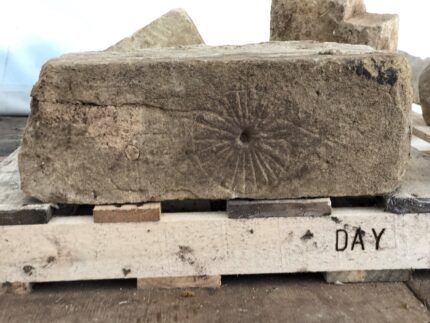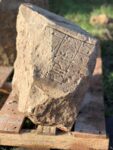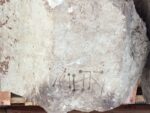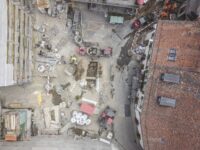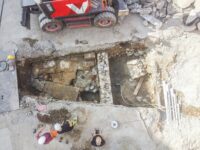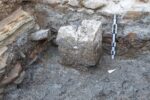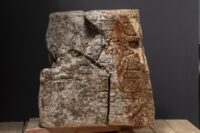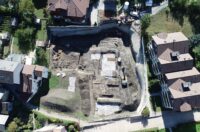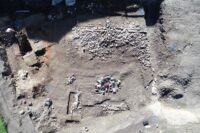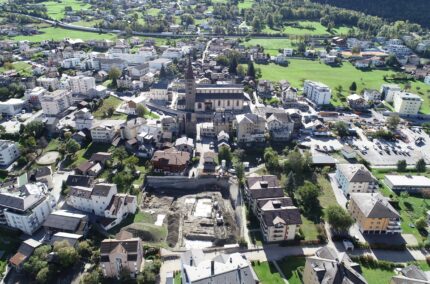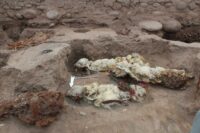 Excavations at the Inca city of Tambo Viejo on the south coast of Peru have unearthed natural mummies of llamas that were ritually sacrificed and left as depository offerings. The discovery establishes Tambo Viejo, a new settlement founded in the Acari Valley by the Inca, as a regionally important locus of religious practice, an administrative center created by the Inca as a cultural foothold in a newly conquered area.
Excavations at the Inca city of Tambo Viejo on the south coast of Peru have unearthed natural mummies of llamas that were ritually sacrificed and left as depository offerings. The discovery establishes Tambo Viejo, a new settlement founded in the Acari Valley by the Inca, as a regionally important locus of religious practice, an administrative center created by the Inca as a cultural foothold in a newly conquered area.
The Inca worshiped a diverse pantheon of deities connected to phenomena (thunder, rain), astronomy (sun, moon), the earth, topographical features (rivers, caves) as well as their ancestors. All gods and ancestors received sacrificial offerings and ritual offerings were performed very frequently. The most common sacrificial offerings were llamas and guinea pigs.
The llama was of enormous importance to the Inca economy, from their wool to their feces to their stamina and agility in carrying loads over mountains. The emperor in Cuzco frequently walked around with his white llama and the Inca Empire’s state herds are reported to have numbered in the millions.
They needed a large supply to keep up with demand for sacrifice. The Spanish chronicles described mass sacrifices in which hundreds of llamas were killed and their meat eaten in a community feast. They were sacrificed at planting time, at harvest time, to make it rain, to make it stop raining and in honor of ancestors. When things got really bad and big blood was deemed necessary to appease the gods, llamas were sacrificed by the thousands. There is archaeological evidence of mass animal sacrifices, including at Tambo Viejo.
Excavations in 2018 focused on two structures on the north end of Tambo Viejo. One brown llama was found in the center of the smaller building. It was a single burial. The larger building had four llamas (one brown, three white) buried in the center of the room. All had been buried under the floors with their heads facing the east. The llamas were all very young, neonoates to sub-adults.
The brown llama in the individual burial was missing its head and he was probably moved. The bones of infant camelids were seen on the surface in this area, so the building may have been rifled through by looters. There were more bones in the second building as well, so this was a larger sacrifice than just the mummified individuals.
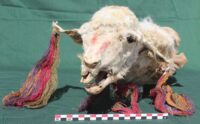 The llamas were accessorized with long camelid fiber strings. The fibers were brightly died in red, green, yellow and purple and groups of each color were tied to the llamas’ ears at the tip like tassels. The llamas also wore string necklaces around their necks in matching colors. The longest strings (found on one of the white llamas) are 14 inches long; the shortest (found on the brown single burial) are three inches. The white llamas were also painted: a red dot on top of their heads and red lines from eyes to nose. They were buried with decorated guinea pigs, tropical bird feathers and food offerings including maize and black lima beans.
The llamas were accessorized with long camelid fiber strings. The fibers were brightly died in red, green, yellow and purple and groups of each color were tied to the llamas’ ears at the tip like tassels. The llamas also wore string necklaces around their necks in matching colors. The longest strings (found on one of the white llamas) are 14 inches long; the shortest (found on the brown single burial) are three inches. The white llamas were also painted: a red dot on top of their heads and red lines from eyes to nose. They were buried with decorated guinea pigs, tropical bird feathers and food offerings including maize and black lima beans.
There is no evidence on the remains of how they were killed. Sacrificial llama remains found at other sites have shown signs of sharp cuts through the throat or into the diaphragm to remove the heart and fatal blows to the head. The Tambo Viejo llamas had their legs bent under them and were trussed up, so it’s possible they were buried alive.
Radiocarbon analysis of charcoal samples from the burials date the llamas to between 1432 and 1459. If the dates are accurate, that means the Inca took over the Acari Valley decades before 1476, the year when the conquest of the area was previously believed to have taken place.
As the Inka expanded from their Cuzco heartland, they interacted with groups who were culturally and linguistically diverse, and whose final annexation produced the great cultural fusion that characterised the Inka Empire (Morris & Thompson 1985: 24). The Inka sought to understand the economic potential of the lands and peoples brought into their empire, and to create reciprocal relationships with the newly conquered subjects.
The Inka presence probably disturbed the extant socio-cultural conditions, which the Inka attempted to normalise by befriending the locals and providing gifts and food to the conquered peoples, while also acknowledging the local huacas and gods. The Inka believed that it was not possible to take something without giving something back; this implied that the annexation of peoples and their lands required an exchange to normalise the otherwise abnormal situation. This was especially the case with groups who were annexed peacefully, such as the inhabitants of the Acari Valley. Inka recognition of local deities was a necessary step to guarantee a long-lasting relationship between the conquerors and the conquered. […]
It remains unclear whether the land within which Tambo Viejo was established had any earlier religious significance. It is evident, however, that the Inka either reinforced its religious connotations or transformed the location into one that was ritually important. As the evidence from Tambo Viejo illustrates, Inka rituals performed in the provinces aimed to project and magnify the importance of Inka ideology and religion, as manifested in the sacrifice of brown llamas to Viracocha and white llamas to the Sun. Such rituals conducted at Tambo Viejo therefore epitomised Inka imperial ideology. The llama and guinea pig offerings are the material manifestations of ritual celebrations performed at the site. Ultimately, all of these ritual acts enabled the Inka to legitimise their presence in the Acari Valley.
